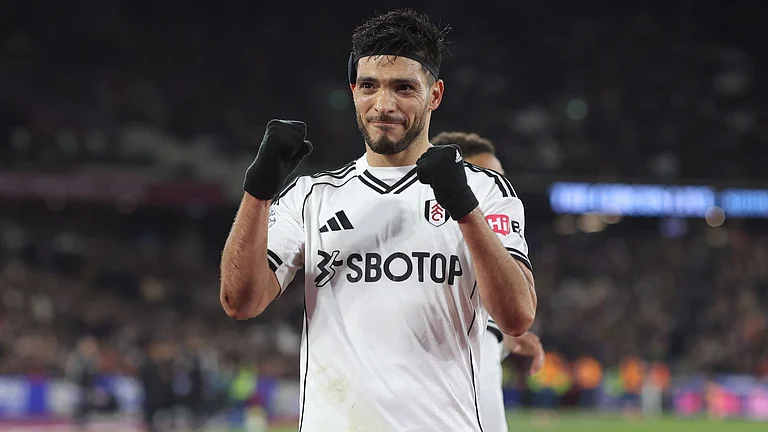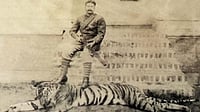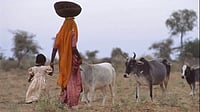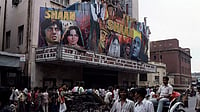A tiger calling somewhere up wind, strange shifting lights on a sheer rock wall the darkness and a solitary figure with a rifle moving through the jungles of the night: Jim Corbett fans are in for a treat. From the quirkily peering tiger on the cover to the contents, everything is guaranteed to take readers back down memory lane with some additional information thrown in for good measure which will add to the pleasure.
The heart of The Corbett Papers is Corbett’s own self published Jungle Stories with some of which many readers will be familiar since stories from the book were later included in Man-eaters of Kumaon. Shah and Alter have published the original first edition with its quirks of spelling – cheetle on occasion for chital, the old fashioned ‘shewed’ for showed – and with Corbett’s comments to the reader on his intention of including a photograph to the Purna Giri Lights story.
What emerges from the narrative is the fact that Corbett is above all a sportsman – he writes that for him hunting man-eaters is a sport, though it has the added advantage of saving human life. However, his aversion to taking risks with the lives of others also comes through – he prefers to track man-eaters by himself rather than deal with a mix up between man and tiger which might cause lethal chaos. Through his letters to his sister Maggie written from camp during his hunts he was able to reconstruct the events meticulously – this snippet, incidentally puts paid to certain rumours that it was Maggie who wrote the books.
Acting as bookends are texts from DC Kala, Corbett’s first biographer, a 20-page memoir from Maggie, who survived her brother, a story by Charles Doyle, Corbett’s half brother and descriptions of Colonial Life from Kala’s father who worked in the administrative service of Naini Tal and therefore encountered Carpet Sahib and his friends under whom he worked. The papers end with his Last Will and Testament.
There are 20 pages of reminiscences from his Maggie as told to her friend Ruby Beyes in Nairobi after her brother’s death which give new insights into why Jim and Maggie left India after Independence despite the fact that their Indian friends begged them to stay. Of course, Maggie’s reasons are entirely personal and may or may not appeal to those who read it. However she does provide a plethora of information about Jim’s childhood and adulthood including what is perhaps not so widely known about an almost fatal fall from a tree. What come through from her account are his courage and resilience and his wish to be reborn in Kumaon.
Charles Doyle, the half brother writes on similar subjects as Corbett but his style verges on the stagey, as the editors point out, and he uses the old fashioned technique of trying to keep his readers on a cliff edge at high points of his narrative. Doyle’s work makes for an interesting comparison with his brother’s writing as the stories were set in the same part of the world with tigers thrown in.

DC Kala Corbett’s biographer contributes a chapter from his biography and another that talks about Corbett National Park when it carried the name Hailey. His father GR Kala chips in with his notes on working for the Raj, which add a different perspective to the book.
Here, through the varying accounts and the accompanying documents, Jim Corbett comes across as generous, kind and a firm believer in Queen and Country – as his will with its grant to the Duke of Edinburgh testifies. He was also considerate where his publishers were concerned, gifting them rugs and his favourite rifle – though the latter caused some chaos since publishers quite obviously lack gun licences!
In all, The Corbett Papers, precisely edited, gives us a well rounded portrait of the man we know only from his man-eater stalking aspect and his thoughtfulness for villagers – who referred to him as the ‘sadhu sahib’ because no one else could have spent three nights alone in the jungle and survived!
The Corbett Papers
Biographical, Legal & Contextual Material on the Life & Career of Jim Corbett of Kumaon
Compiled and edited by- Akshay Shah & Stephen Alter Hachette
Price- INR 699/


























